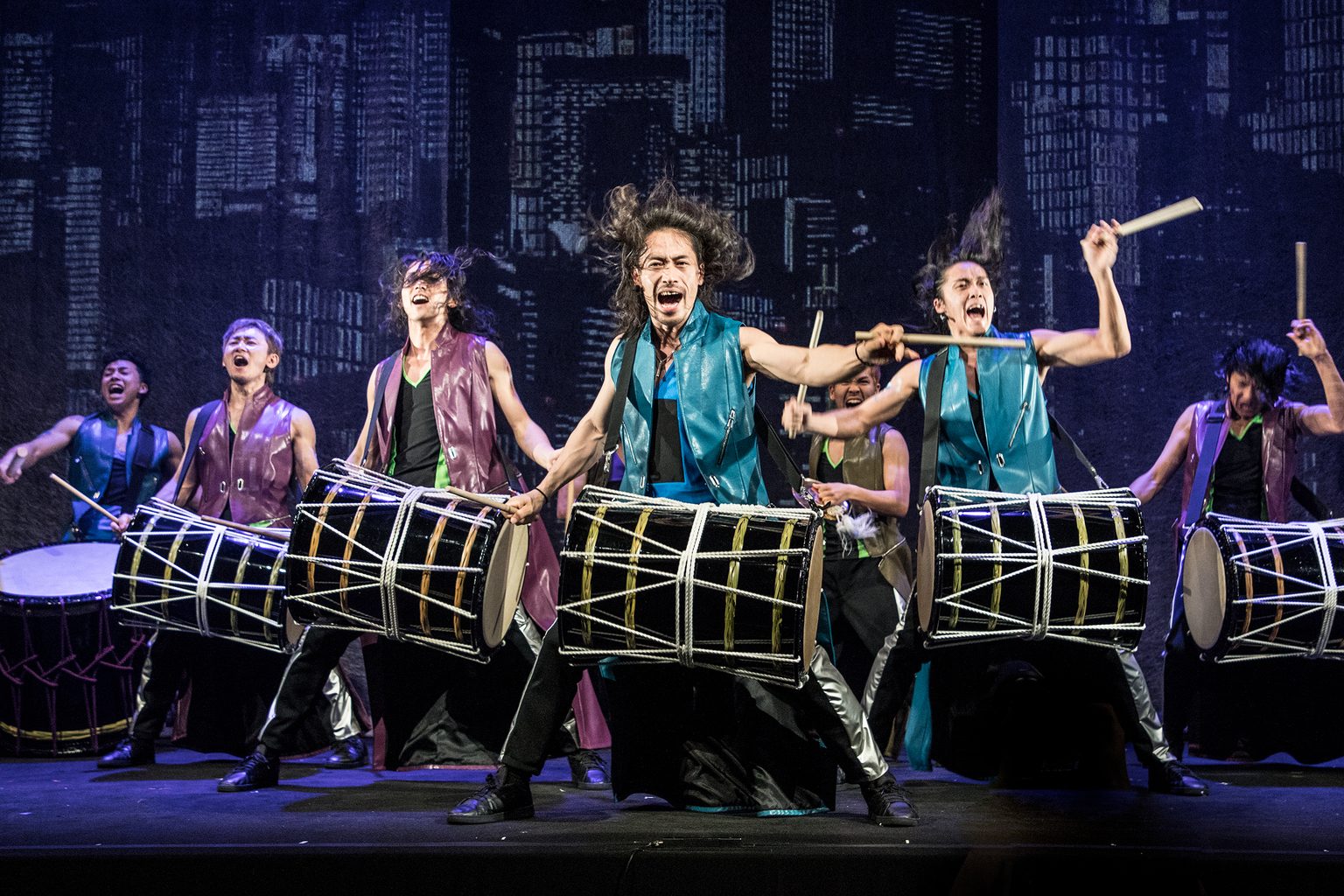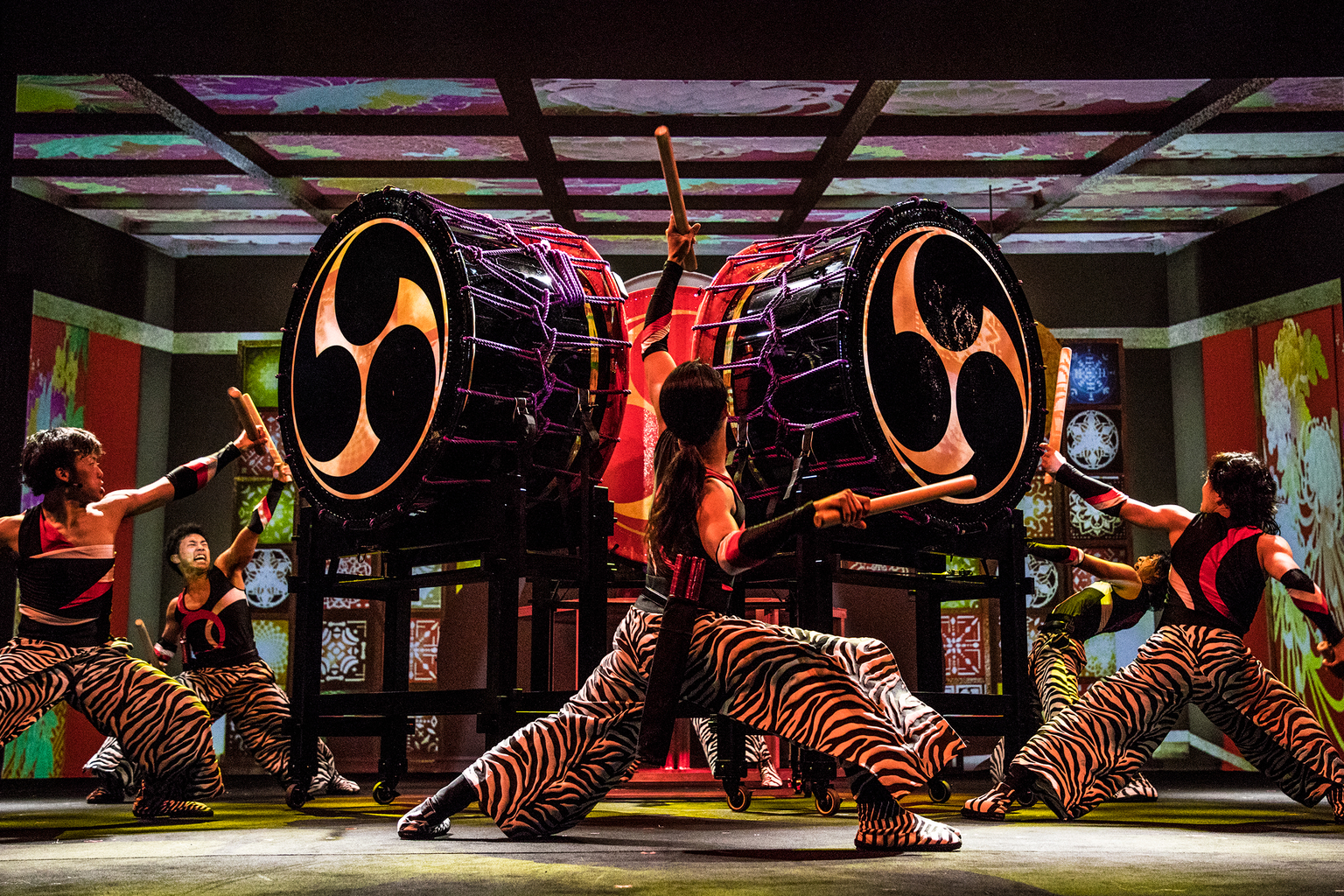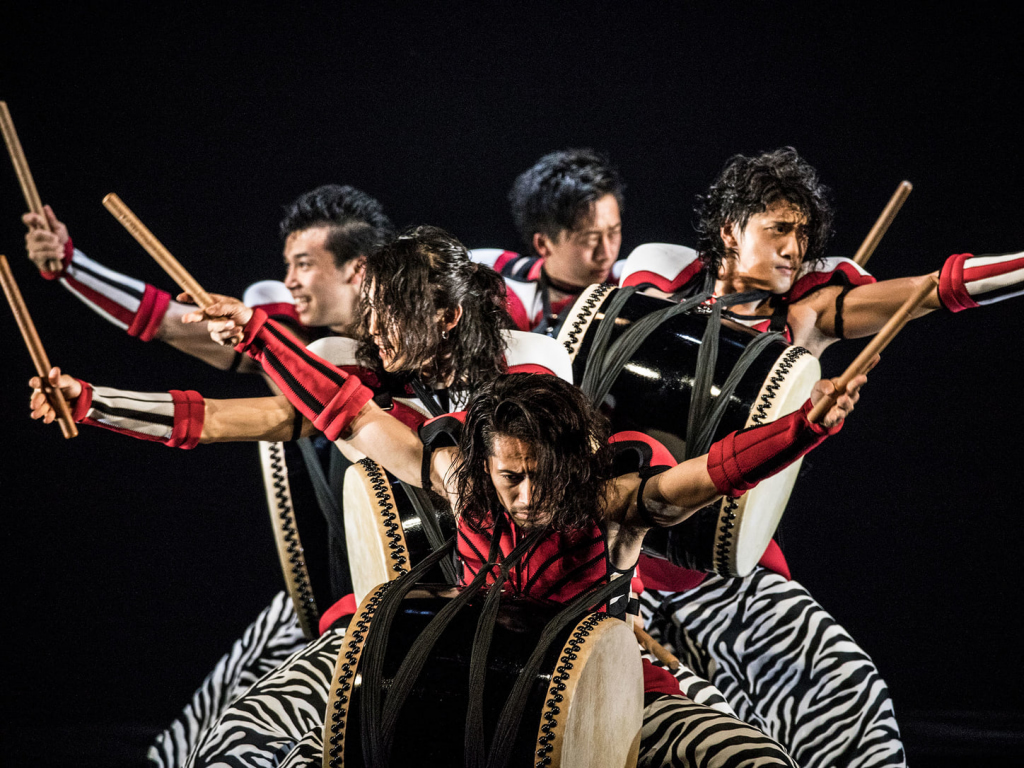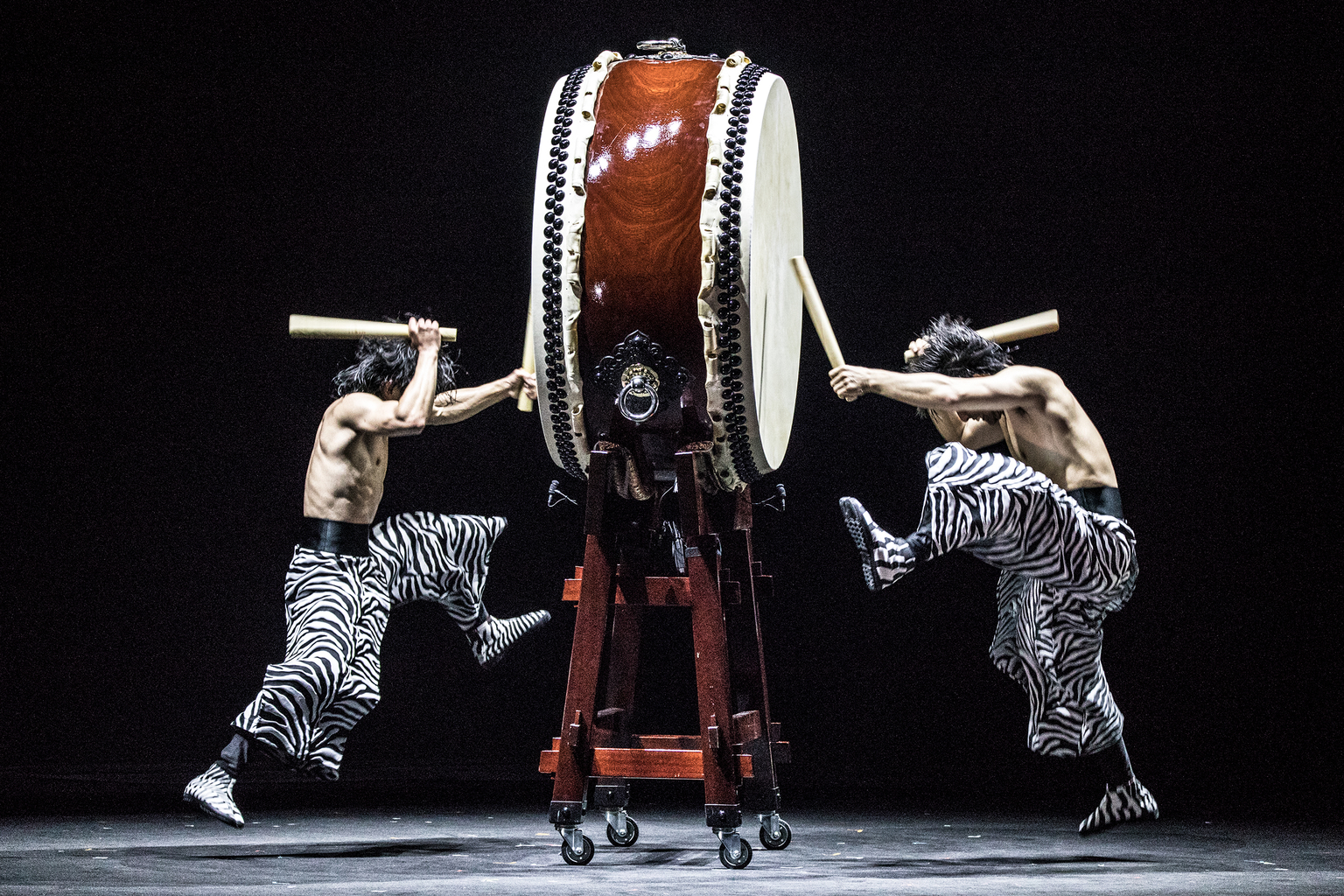Taiko troupe Drum Tao are equally known for their drumming skills as they are for their explosive stage performances. Though wadaiko (Japanese drums) brings forth images of traditional festivals, Drum Tao fuses the long-established craft of taiko (the art of traditional Japanese performance drumming) with a modern style. The team itself finds it difficult to describe its show in words, stating that once you’ve seen them live, you’ll understand the appeal.
The team, consisting of 31 members, is based in the beautiful Kuju area of Taketa city in Oita Prefecture, inside Aso Kuju National Park. The group originated in Aichi Prefecture in 1993, but moved to its current location in 1995. Since then, members have toured the world, performing for over eight million people, even making an appearance at the 2010 Winter Olympics in Vancouver.
Hiroaki Kishino, the leader of the troupe, has been performing with Drum Tao for 17 years, but his experience as a wadaiko drummer dates back even further. He was drawn to the group’s unique mix of modern and traditional styles and powerful performance. Daisuke Fumoto, on the other hand, is in his fifth year with the group and had no prior drumming experience. A fan of movies, theater, and music, he went to see one of their performances in Kagoshima and was blown away by the experience. “I felt like I was entering a world I’d never experienced before, and was completely taken by it. I was fascinated and wanted to give it a try, so I applied to join,” he explains.
Becoming a Drum Tao Member
The group holds auditions on occasion, attracting aspiring members from all over the country – even from abroad. To become a good drummer takes training, dedication, and – according to members of the group – the ability to handle being thrown into the deep end early on.
Kishino: First, you have to do foundation training – working out and so on – and then you learn how to wield the drumsticks. Then you can practice on the drums. That’s the general flow. Once a new member has the basics down, we get them on stage as soon as possible, even if it’s only for a short scene. That way they can quickly learn how to act in front of an audience. After that, it’s just a matter of improving everything.
Fumoto: Anyone hitting a drum can make a noise, right? But that’s what makes it difficult. When I first joined, I knew nothing. I’d watch the more experienced members and I’d try to do the same thing, but the sound was completely different. But I didn’t realize it! Eventually I could tell the difference between our sounds and that was the first step. The difference between beginners and skilled people is huge and I finally came to hear and see that.
Kishino: The absolute most important thing is being able to hit the drums well. Part of that involves considering your expression and how you’re presenting yourself while performing. If you don’t, it shows. It can come off as fake, or doesn’t touch the hearts of your audience. It’s a battle against yourself, in a way, but if you don’t solidify that aspect of your drumming, people can tell.


Behind the Scenes on a Typical Day
Each day – both while on tour and otherwise – begins with a workout first thing in the morning. Running is a core part of training and while there is some weightlifting too, the most important exercise involves the drums.
Kishino: Drumming is the simplest workout but it’s also the most effective. If that isn’t down pat then we can’t perform well. By focusing on that it gives us room to improve other aspects of our show. You could even say that our instrument setup is a part of our workout routine. Other musicians can show up at a venue, have others tune their instruments for them and then head home after it’s all done. We must do everything ourselves. Drum maintenance is very specific – close to a craftsman’s skill. To tune our drums, we have to take them apart completely: undo the ropes, take it all apart, then put it together and tighten it back up again. No matter how much you try to rush it, it takes an hour to take the drum apart and another to piece it together again. When you add moving between venues and so on, preparation takes a while. And if we don’t do it ourselves, it just doesn’t get done quite right.
Fumoto: I heard a story from one of the other members that one time they asked someone else to prep their drum for them and their performance ended up being a bit “off.” They felt different when they were on stage. It seems like putting a drum together yourself is like a form of mental preparation.

The Challenges of the Job
Drum Tao members spend a lot of their time on tour. It takes a toll on the body and mind and sometimes mistakes are made – by members and non-members alike.
Fumoto: There was a scene in one production where a giant taiko was moved down from a raised stage. Once it’s taken down, someone hits the drum, so you have to attach it to the ground to keep it in place. I was the one in charge of attaching the rope, but I’d forgotten to bring it with me. One of the senior members rushed on to stage to help me out. If I didn’t get off stage right then I wouldn’t have made the next scene. He shouted, “Just go!” and held the drum down as another member started hitting it. I shouted “Sorry!” back to him as I ran offstage … I wonder if his ears were okay after that?
“It’s a battle against yourself, in a way”
Kishino: When we go abroad, we send the drums by sea. Because it’s hard to estimate exact arrival dates, we send them as far in advance as we can. But one time they didn’t arrive – and it was already the day of the show. We had no drums! Now, there’s a form of practice we do called kuchi showa (chanting in unison) where we practice our drumming vocally. We ended up doing that for our performance because we had no other instruments! I think the audience wondered, “What on earth are they doing?” Thankfully, the drums arrived the next day.
Bringing It All Together
Workouts and practice aren’t just for becoming stronger or better performers – they’re also useful for team building.
Kishino: We talked about the voice chanting exercises before, right? We don’t do that to work on rhythm per se, but I think it has a positive effect on that too. Vocal training helps iron out difficulties someone may be having with keeping up. Instead of waiting for a performance to realize something is off, it’s easier to pick up during the chanting exercise and change it there.
Fumoto: Vocal training is great practice because you can pick up your own mistakes more easily since you’re producing the sound with your own body.
Kishino: Also, kind of off topic, but an interesting fact: we have members from all over the country and everyone has a different dialect. Each dialect has a different rhythm to it, but because we spend so much time together our accents and intonation merge and everyone slips into a “group accent.” I think that helps our collective rhythm and atmosphere, too.
Watch Drum Tao’s Show in Tokyo Next Month
Catch Drum Tao’s upcoming Tokyo performance, “Rhythm of Tribe Final”:
Feb 6 (7pm), Feb 7 (1pm & 7pm), Feb 8 (1pm) at Bunkamura Orchard Hall,
¥6,000-8,500, more info at www.drum-tao.com










